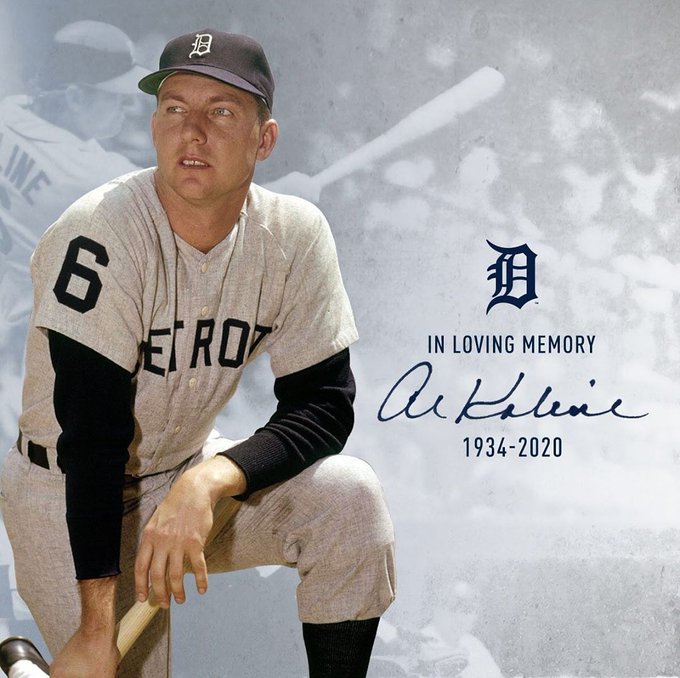
A Sense of Doubt blog post #1877 - "MR. TIGER" - Al Kaline dies - RIP

 I love Baseball as I have written many times on this blog and my other one about T-shirts.
I love Baseball as I have written many times on this blog and my other one about T-shirts.I loved Al Kaline because of what he represented for the Tigers and Detroit.
I am not going to claim in hindsight that Al Kaline was my favourite player and Tiger. That distinction is and will always be given to Alan Trammell. And there were so many players I loved and admired more than Kaline, like Willi Horton, Kirk Gibson, and so many others.
But Kaline WAS the Tigers, he was the heart and soul, and I loved him for his ability, his classy demeanor, and his vast knowledge of the game.
We are poorer without him, but I treasure his time with us.
Take care, Mr. Kaline. Thanks for the memories.
Many tributes and shares follow.
.jpg)
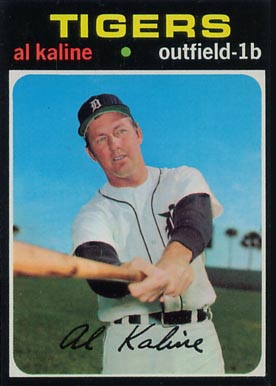
https://www.mlb.com/news/al-kaline-dies-at-85
HOFer Kaline, beloved 'Mr. Tiger,' dies at 85
April 6, 2020
DETROIT -- Hall of Famer Al Kaline, fondly known as Mr. Tiger for a career that spanned 67 years with the only Major League team he knew, passed away Monday at age 85.
Kaline spent virtually his entire adult life as a Tiger, signing with the club as an 18-year-old the day after his high school graduation in Baltimore. He made his Major League debut a week later on June 25, 1953, and embarked on a 22-year playing career that included 18 All-Star selections, 10 Gold Gloves in the outfield, a batting title at age 20, a World Series title in 1968, 3,007 career hits, induction into the Hall of Fame in his first year on the ballot and his No. 6 retired by a grateful organization.
The son of a broom maker grew up to become one of the greatest ever to swing a bat. No player, not even Ty Cobb, has played more games (2,834) or hit more home runs (399) in a Tigers uniform than Kaline. He’s the only player other than Cobb to lead the franchise in a cumulative offensive category, and had he hit one more homer, he would be on a list that includes only 10 players in big league history with 3,000 hits and 400 home runs. When Kaline won the American League batting title in 1955, he bested Cobb by a day to become the youngest batting champion in league history.
Unlike Cobb, Kaline spent his entire career as a Tiger. Until Alan Trammell, Kaline was the only Tiger ever to spend an entire career of at least 20 years in the organization.
"I’m proud I was a Tiger for my entire career," Kaline said in 1986. "And you know what they say, it looks good on the back of your bubble-gum card if there’s only one team."
"Many of us who are fortunate enough to work in Baseball have our short lists of the players who mean the most to us," MLB Commissioner Rob Manfred said in a statement. "Al Kaline was one of those players for me and countless others, making this a very sad day for our sport. A lifelong Tiger, Al was a true gentleman and one of the National Pastime’s most universally respected figures. I appreciated his friendship, humility and the example that he always set for others since he debuted as an 18-year-old rookie.
"On behalf of Major League Baseball, I extend my deepest condolences to Al’s wife, Louise, their family and friends, his admirers and the generations of Tiger fans who looked up to him."
“One of the most distinguished and decorated players in the history of baseball, ‘Mr. Tiger’ was one of the greatest to ever wear the Olde English ‘D,’” The Tigers said in a statement. “The Hall of Famer has been a pillar of our organization for 67 years, beginning with his Major League debut in 1953 and continuing to present in his duties as Special Assistant to the General Manager. Our thoughts are with Mr. Kaline’s wife, Louise, and family now, and forever.”

Indeed, Kaline’s playing days were just the start of his Tigers tenure. After hanging up his spikes shortly after joining the 3000-hit club in 1974, he stepped into the broadcast booth as a television analyst, becoming familiar to a new generation of Tigers fans. He also taught the next generation, working with future Tigers outfielders, such as Kirk Gibson, in Spring Training.
“He was always in my corner from day one. That’s just the way his personality was,” Trammell said. “Al was not pushy. He was always there if you needed him. And if you had a question, he always had great baseball knowledge.
“The look of his era, the way he dressed, he did everything to me better than most. Not that I was trying to be him, but I took notice of the things that he did, how he spoke, how he treated people. It was very special to be part of the Tiger family, and Al Kaline is really at the top. There's no question.”
Kaline spent a quarter-century as a Tigers broadcaster, then stepped aside to accept a role in the club's front office in 2001. His title was special assistant, but he was one of the more influential voices in the organization for then-general manager Dave Dombrowski and later Al Avila, for the late owner Michael Ilitch and then his son Christopher, helping in everything from on-field instruction to player development to player evaluation. He was still a fixture on the field in Lakeland, Fla., for outfield drills in Spring Training last month.
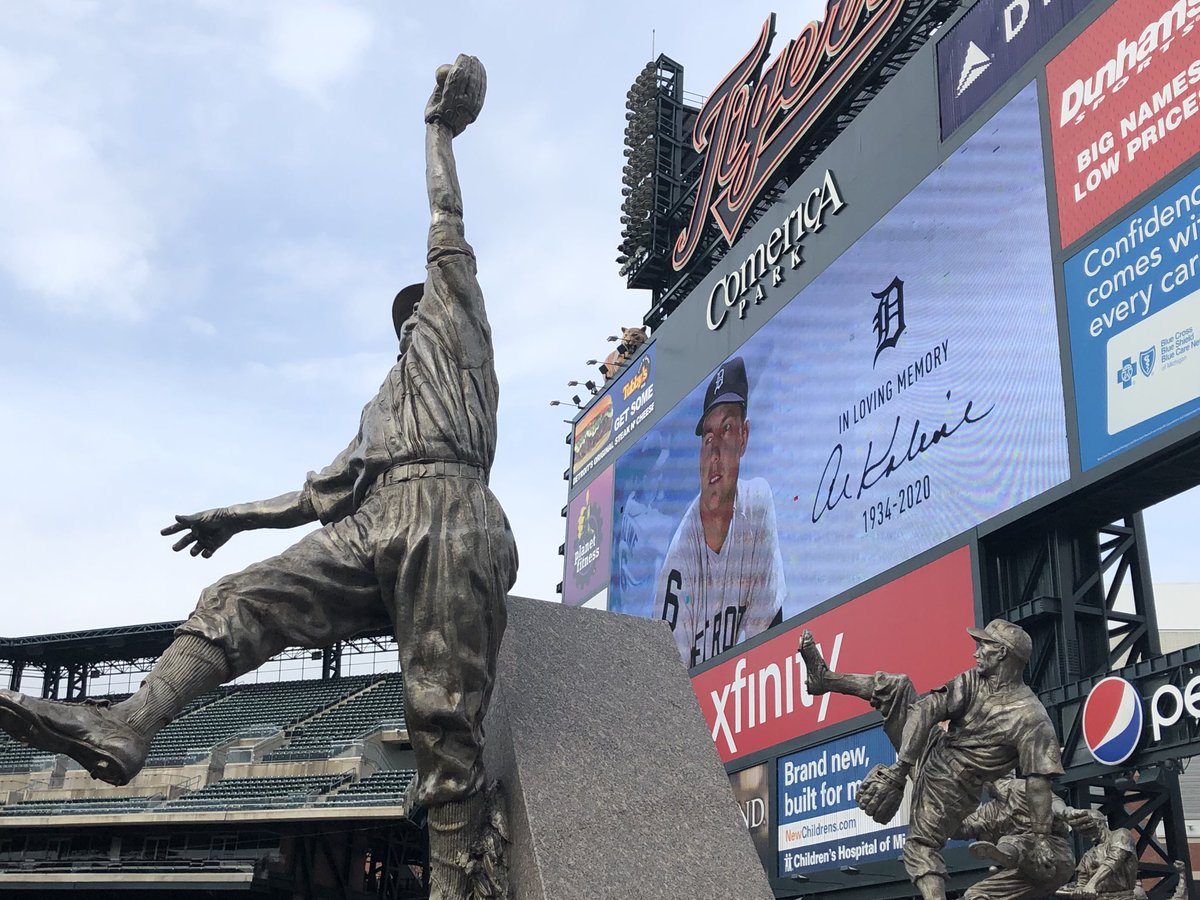
“Baseball lost a titan today,” Tigers chairman and CEO Christopher Ilitch said in a statement. “Anyone who knew Al Kaline would describe his gentle soul and passion for baseball as an unbelievably powerful combination, making him one of the most respected players in Major League Baseball history. My mother, father and I cherished the special relationship we had with Al Kaline, who was a trusted advisor and dear friend for many years.
“His dedication to Detroit was unparalleled and he was affectionately known as ‘Mr. Tiger.’ His positive contributions will forever be realized by baseball fans everywhere. The impact of his life is far-reaching, and he will be greatly missed by millions in Detroit, the state of Michigan and across the baseball community.”
“This is an exceptionally sad day for all of us in the Detroit Tigers family,” Avila said. “Al Kaline was a giant in this industry, a man of great humility, and has been a friend to me and many in this community for decades. I was blessed to sit with him during nearly every home game at Comerica Park, and I hold close our bond that has been created over nearly two decades of working together.”
Dombrowski and Kaline also developed a friendship that continued well after Dombrowski’s time in Detroit.
“We worked very closely together,” Dombrowski said. “He was a wonderful human being. He loved the Tigers, loved Detroit, had a passion about the game of baseball. He was humble, hard-working, you could see why people loved it. But I'd have to say for me it was much different because we developed a wonderful friendship. He knew my children, Darbi and Landon. He was very close with them. My wife Karie and his wife Louise, the four of us became close friends.”
Such a kind and generous man who meant so much to so many. I hope you knew how much I enjoyed our conversations about baseball, life, or just giving each other a hard time. I am honored to have been able to call you my friend for all these years. R.I.P. Mr Tiger, Al Kaline.
1,698 people are talking about this
More than anything, to many players who came through Tiger Stadium and Comerica Park, he was a sage voice and a good friend. He was Mr. Kaline, but he drew instant recognition and respect when he spoke.
"As a young player with the Tigers, I came to understand the depth of Al Kaline's connection to the baseball community and the city of Detroit," MLB Players Association executive director Tony Clark said in a statement. "He set a standard of excellence with his achievements on the field. But those of us who considered him a mentor will remember him equally for his class, humility and generosity of spirit. The MLBPA extends its sympathies to Al’s family, the Tigers organization and all of those whose lives he touched as a Hall of Fame player and ambassador for the game.''
That ability to connect continued through the generations, to current players whose grandparents likely remembered Kaline’s playing career, and it was just as much of a gift as his athleticism. His grace off the field matched his grace on it. Kaline traveled to Double-A Erie and helped former Tiger Nick Castellanos transition into the outfield on his way through the Tigers system. When Castellanos went to the Cubs in a trade last summer, he wore number 6 in part to honor Kaline. When former Tigers catcher James McCann returned to Comerica Park last year with the White Sox, Kaline went to the visiting clubhouse and hugged him.
Mr. Kaline will always be remembered as the greatest Detroit Tiger of all time, but to me he was more than that. He was a friend and I feel blessed to have known him. His wise words about baseball and life will never be forgotten. Thank you, Mr. Kaline. You will be missed.
206 people are talking about this
“Mr. Kaline will always be remembered as the greatest Detroit Tiger of all time,” McCann tweeted Monday, “but to me he was more than that. He was a friend and I feel blessed to have known him. His wise words about baseball and life will never be forgotten. Thank you, Mr. Kaline. You will be missed.”
Mr Kaline truly is one of the kindest most welcoming ppl Ive ever met. From shaking his hand the 1st day I was a tiger to seeing him every single Sunday at the park, he was always genuine. Greeting every player with kindness and a listening ear. I’m going to miss you Mr Tiger.
134 people are talking about this
“Mr. Kaline truly is one of the kindest most welcoming ppl I’ve ever met,” Tigers pitcher Matthew Boyd tweeted. “From shaking his hand the 1st day I was a tiger to seeing him every single Sunday at the park, he was always genuine. Greeting every player with kindness and a listening ear. I’m going to miss you Mr. Tiger.”
Said Dombrowski: “He related well to young players, just because he liked being around people, I think. He could relate to everybody. That was unique, to be able to do that with people with the age difference. But he did it easily. My children loved him.”
“Al Kaline brought such dignity and grace to our game, and to the Hall of Fame," Hall of Fame chair Jane Forbes Clark said in a statement. "As one of baseball's greatest right fielders, every new generation of Hall of Fame Members were in awe of Al, not only as the player he was, but also as the true gentleman that he was. He will be missed throughout the game – and honored forever at the Hall of Fame. We join the Detroit Tigers and the entire baseball community in mourning the passing of a true legend, and we extend our deepest sympathies to the Kaline family.”

Kaline was in Lakeland for Spring Training last month. While he spent time around the ballpark and connected with players, he also had dinner with former Tigers manager Jim Leyland.
“We go to dinner that night and we talked 1953 Tigers up until 2020 Tigers, all the old guys, the old coaches, the old managers,” Leyland said. “It was one of those evenings you never want to leave. And when we got back, he hugged me and said, ‘Thank you for being a friend for all these years.’”
Though Kaline was born (Dec. 19, 1934) and raised in Baltimore, he and his wife Louise made Michigan their home for life when he became a Tiger. He alternated between the Detroit area and Lakeland during his later years until recently moving back to Michigan. The couple's grandson, Colin, was drafted by the Tigers and played two years in the organization before going into coaching. He became a head coach at Oakland University in Michigan before stepping aside last month.
Kaline is survived by Louise, his wife of 65 years, their two sons, four grandchildren and one great-grandchild. He also leaves behind a legacy that might never be matched in Detroit.
“He'll be missed,” Trammell said, “but never forgotten.”
Jason Beck has covered the Tigers for MLB.com since 2002. Read Beck's Blog and follow him on Twitter @beckjason.
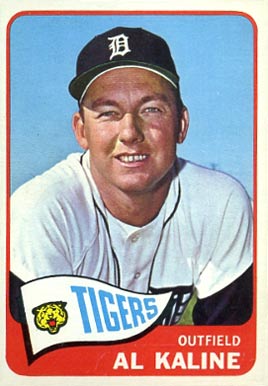
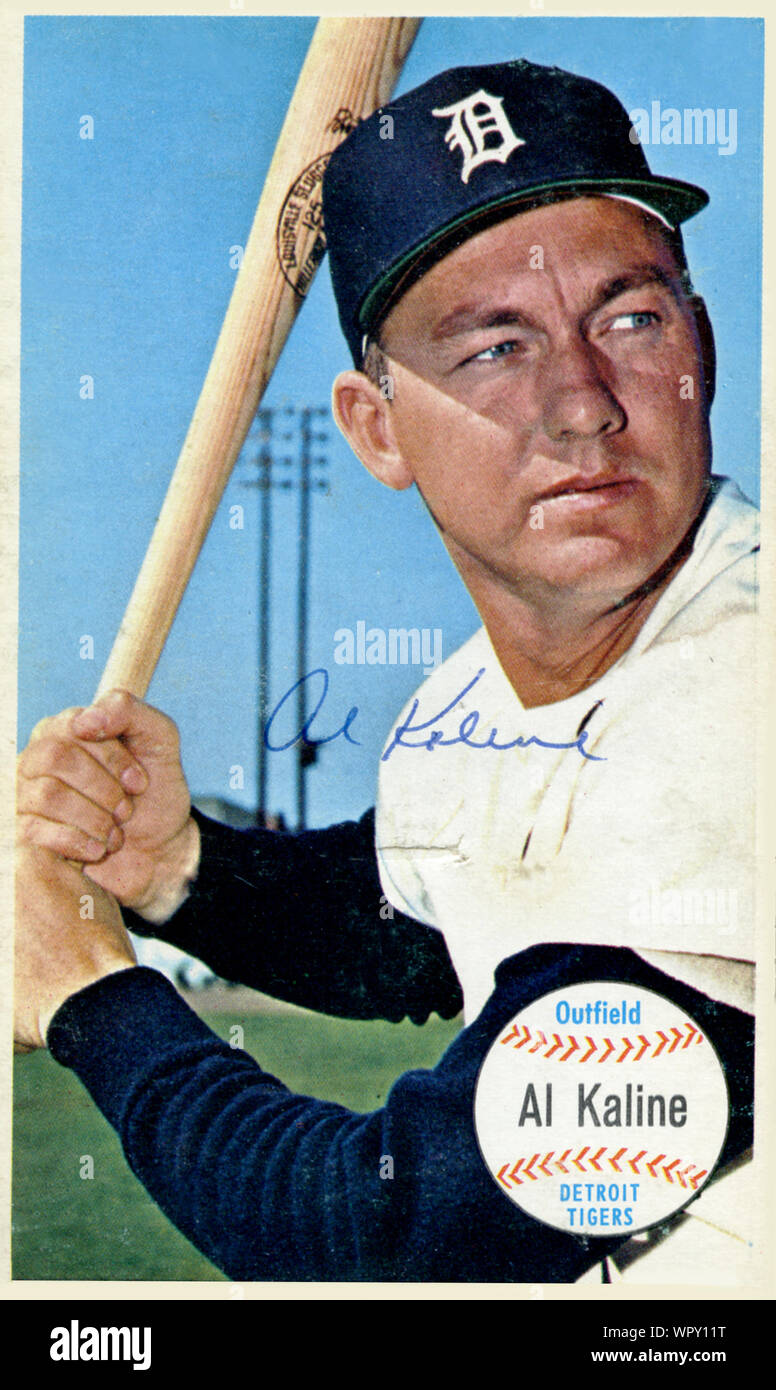
Al Kaline, Detroit Tigers legend, dies at age 85 - FREEP
Al
Kaline, Detroit Tigers legend, dies at age 85
John
Lowe, Detroit Free PressPublished
3:30 p.m. ET April 6, 2020 | Updated 8:45 p.m. ET April 6, 2020
Al Kaline, who in a long and unique Detroit Tigers lifetime grew from youthful batting champion to Hall of Famer to distinguished elder statesman, died Monday afternoon at his home in Bloomfield Hills. He was 85.
A cause of death was not immediately available. John Morad, a close friend of the family, confirmed the news to the Free Press after speaking with Kaline's younger son, Mike. His health had been declining over the past year.
Kaline is survived by another son, Mark, and his wife, Madge Louise Hamilton.
"One of the most distinguished and decorated players in the history of baseball, 'Mr. Tiger' was one of the greatest to ever wear the Olde English 'D',' " the Tigers said in a statement Monday. "The Hall of Famer has been a pillar of our organization for 67 years.
"... Our thoughts are with Mr. Kaline's wife, Louise, and family now, and forever."
In 22 seasons with the Tigers, most of them as a marvelous right fielder, Kaline played in more games and hit more homers than anyone else in club history, and he compiled a batting résumé second only to Ty Cobb’s.
But while Cobb was widely reviled for his bitterness and meanness, Kaline was eminently respected for his on-field elegance and off-field graciousness.
Thus, Kaline has a strong claim as the most distinguished Tiger of them all.
| Al Kaline, born Dec. 19, 1934 in Baltimore, Maryland, is most known as "Mr. Tiger" and his 22 years playing for the Detroit Tigers. Kaline was inducted into the Baseball Hall of Fame in 1980. (Photo: Jim Hawkins, DFP Archives) |
Albert William Kaline was born in a working poor section of Baltimore on Dec. 19, 1934. His father was a broom maker. His mother scrubbed floors. When Kaline received a reported $35,000 signing bonus from the Tigers in 1953, he paid off the mortgage on his parents’ home and paid for an eye operation for his mother.
“They’d always helped me,” he said. “They knew I wanted to be a major leaguer, and they did everything they could to give me time for baseball. I never had to take a paper route or work in a drugstore or anything.
“I just played ball.”
He signed with the Tigers the morning after he graduated from high school and made his major-league debut a week later. He would never play in the minors. He would never wear any uniform but Detroit’s.
Hall of Fame glove, bat
Kaline was 39 when he played his final game, in 1974. Days before his career ended, he had reached one of baseball’s most cherished plateaus when he recorded his 3,000th hit.
But he finished with 399 home runs, and on the final day of his career, he left the season-ending game with several innings remaining.
But statistics never captured how special Kaline was. Like the Yankees’ Joe DiMaggio and the Cardinals’ Stan Musial, he embodied the beauty of the game and became a living monument of how gracefully it could be played.
Hall of Fame voters didn’t seem bothered that Kaline didn’t hit 400 homers. In his first year of eligibility, he was elected with 88% of the vote by baseball writers — well above the 75% required for induction.
Yet the humble Kaline said he was “shocked” when he learned he had been elected. After the Hall of Fame’s initial class in 1936, only nine players before him were elected in their first year on the ballot, a list of diamond luminaries that included Musial, Ted Williams, Willie Mays, Mickey Mantle and Jackie Robinson, but not DiMaggio, Cy Young, Hank Greenberg or Yogi Berra.
Kaline is one of the few dozen players in history to get 3,000 hits. Like his contemporary, Pittsburgh right fielder Roberto Clemente, Kaline is remembered nearly as much for his defense as for his offense — perhaps just as much.
In one game as a rookie, Kaline threw out a Chicago White Sox runner for three consecutive innings — at home, third and second. The Sporting News said of a robbery he made in 1956 at Yankee Stadium: “No one who saw it will forget how Kaline shot above the right field scoreboard in the stadium to make a great one-handed catch on Mickey Mantle.”
Kaline is one of six Tigers with a statue behind the left-center field fence at Comerica Park. And despite his 3,007 hits and those club-record 399 homers, that statue shows him not with a bat in hand, but making a leaping, one-handed catch like the one he made on Mantle.
But Kaline likely would have made the Hall of Fame on his hitting alone. Every eligible player who has gotten 3,000 hits has entered the Hall except for Rafael Palmeiro, whose candidacy was short-circuited by a positive test for steroids soon after his milestone base hit in 2005. Kaline won the American League batting title as a 20-year-old in 1955, and although he never won another, he never stopped hitting.
In Kaline’s final season, ace Baltimore pitcher Jim Palmer said of him: “I like to watch him hit. I like to watch him hit even against us. He’s got good rhythm, a picture swing. Other hitters could learn a lot just by watching him. The thing about Kaline is that he’ll not only hit your mistakes, he’ll hit your good pitches, too.”
Palmer recalled how in his first big-league start, in 1965, he struck out Kaline looking on three pitches the first time he faced him. The second time up, Palmer said, he threw Kaline a fastball, curve and change-up. Kaline hit the change-up for a two-run homer.
After one year out of baseball following his retirement, Kaline joined the Tigers’ television team in 1976 as the analyst for play-by-play man George Kell, a former Tigers third baseman. Kell, also a Hall of Famer, and Kaline, after a rough learning curve, provided engaging, incisive commentary on telecasts for the next two decades.
When Kell retired from broadcasting, Kaline worked on the air with play-by-play men Ernie Harwell and then Frank Beckmann into 2001.
Before the 2002 season, new club president Dave Dombrowski appointed Kaline a special assistant. He was a frequent inhabitant of the field and clubhouse. After owner Mike Ilitch fired Dombrowski during the 2015 season, Kaline remained in the front office as a special assistant for the new general manager, Al Avila.
Short on a homer, long on humility
By never playing in the minors and wearing a Tigers uniform for every game, Kaline is in a very small group of players who performed for one team and one team only. Another was a Hall of Fame contemporary, left-handed pitcher Sandy Koufax of the Dodgers. They faced each other twice, in All-Star Games in the 1960s, with Kaline singling and fouling out.
Baseball’s rules in the 1950s kept the two out of the minors at the start of their careers. Back then, there wasn’t an amateur draft — the vehicle that gives one club exclusive signing rights to an amateur player. To keep down the bidding wars on amateur players in those pre-draft days, baseball mandated that any player signed for more than $4,000 would have to spend two years in the majors before he could be sent to the minors for seasoning.
The Tigers thought Kaline was well worth it. When he came out of high school, the team spread the word it had signed him for $35,000, a figure repeated countless times over the decades.
However, in interviews for a 2010 book, “Al Kaline: A Biography of a Tigers Icon,” Kaline told author Jim Hawkins: “It was a $15,000 bonus, plus two years’ salary of $6,000 each, which was the major-league minimum at the time.”
Still, for a bonus worth $145,000 in today's dollars, Kaline basically went straight from high school graduation to the Tigers. He was 18 years and six months old when he played his first game for them on June 25, 1953.
By the time he was eligible to go to the minors in 1955, he was on the way to that season’s batting title. He was 20 years old when he finished with a .340 average, 21 points higher than anyone else in the league and 12 days younger than Cobb was when he won the 1907 title.
At 20 years and 280 days, Kaline remains the youngest batting champion in American League history.
His highest finish in a batting race after that was second, which he achieved three times. He never led the league in homers or runs batted in, and he never won its most valuable player award (he twice finished second in the voting).
But Kaline hit .300 or better in nine seasons and finished with a .297 lifetime average. In 10 seasons he won a Gold Glove as one of the three best defensive outfielders in the American League.
In his later years, he played often at first base as well as in the outfield. In his final season, he served exclusively in a role that the AL had instituted the year before — designated hitter.
He won the respect of the Boston outfielder who is widely regarded as the greatest hitter in history. This became evident one day as Kaline sat in the media dining room at Fenway Park before doing the telecast of a Tigers-Red Sox game.
Into the room swooped Ted Williams. He knew his entrance would require him to fend off the Boston press with whom he long feuded. But he had an important mission, as he growled at the reporters who approached him. “I just came in here to say hello to Al Kaline,” he said.
Boston wasn’t filled with such kindness for Kaline in 1967, when he was selected an All-Star for the 13th straight year. But in the same season, he had a right to wonder whether he would be among the handful of all-time great players who never reached the World Series.
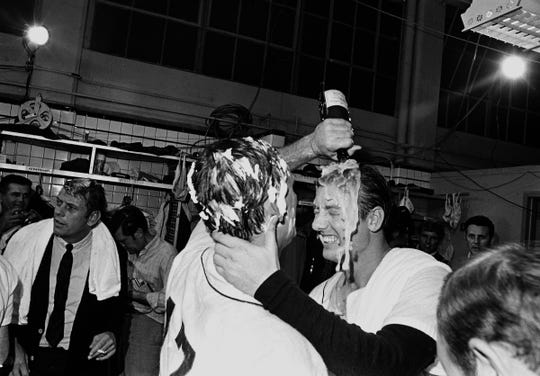
For the first several years of his career, Kaline and the rest of the American League basically were blocked from the World Series by a New York Yankees dynasty. Not only were those the days before the draft caused talent to be more equally distributed, it also was before the major leagues were split into divisions. There were no postseason playoffs within the leagues; the teams that finished first in the American and National leagues advanced directly into the World Series.
In Kaline’s first 12 seasons, the Yankees won 10 pennants. Then that dynasty abruptly collapsed. A few years later, in 1967, the Tigers made their first down-to-the-wire run at the pennant in Kaline’s career. They were eliminated when they lost their final game of the season.
Boston — not Detroit — won its first pennant since the mid-1940s.
But the next year, they would not be stopped, and they didn’t even need a huge season from Kaline. The team had a narrow first-place lead in the AL in late May when he suffered a broken left forearm. When he returned five weeks later, the Tigers were well on their way to the pennant.
They won it by 12 games with a 103-59 record. The MVP of the Tigers and the AL was right-hander Denny McLain, who became the first (and still only) pitcher to win 30 games in a season since the 1930s.

Typical of Kaline’s humility, he questioned whether he even deserved to be in the starting lineup for the World Series. He said he didn’t see how manager Mayo Smith could bench Mickey Stanley or Jim Northrup, who had gotten most of Kaline’s at-bats when he was injured.
After his return July 1, they kept playing and Kaline logged only 191 at-bats. He started and finished only 58 games in right field that season. According to a Joe Falls exclusive in the Free Press the day after the pennant clincher, an emotional Kaline said: “I don’t deserve to play in the World Series.”
But with four outfielders for three starting spots, Smith came up with a daring solution for the World Series against St. Louis: He moved Stanley from center field to shortstop to replace light-hitting Ray Oyler, even though Stanley had played only nine games there in the big leagues.
Kaline returned to right field for the World Series, and he batted .379 with eight RBIs. His 11 hits in the Series included two homers, two doubles and perhaps the biggest hit of the Series and of his career.
The Tigers were within a few innings of elimination when Kaline batted with the bases loaded and one out in the seventh inning of Game 5 at Tiger Stadium. He delivered a two-run single that turned a one-run deficit into a one-run lead.
The Tigers never trailed again in the Series. They won Game 5, then went to St. Louis and beat the Cardinals in Games 6 and 7. At 33, he had played on his first and only pennant winner and world champion.
In 1969, baseball expanded and went to divisional play. In 1972, Kaline played on a first-place finisher for the second and last time. At age 37, he got into one of the hottest hitting stretches of his career in the final days of the season and helped the Tigers edge Boston by a half-game for the East Division title. In his last 10 games, eight of which the Tigers won, Kaline batted .512 (21-for-41) with four homers, eight RBIs and 15 runs scored.
If the Tigers had beaten Oakland in the playoffs, Kaline would have been back in the World Series. But in the winner-take-all final game of the playoff series, Oakland sneaked out of Tiger Stadium with a 2-1 victory. The potential tying run in the decisive Game 5 reached first base in the seventh, eighth and ninth innings against Vida Blue: Aurelio Rodriguez made the third out in the seventh, Kaline made the second out and Duke Sims the third out in the eighth, and Tony Taylor made the game’s final out.
Kaline’s 3,000th hit represented a major circle closing. It came in his hometown of Baltimore on Sept. 24, 1974. He had 2,999 hits when the game began. He grounded out in his first at-bat. In his second, he hit an opposite-field double down the right-field line off left-hander Dave McNally for No. 3,000.
“He hit a fastball that went right across the plate,” McNally said. “I got an autographed ball from him that day.”
Ten days later, on the final day of his career, Kaline’s humility surfaced again and perhaps cost him a chance at his 400th homer. There are a few accepted ways for a star to take his final bow: leave the field for a defensive replacement in the late innings, or take a late-game at-bat. Either way, the crowd can give the departing stalwart one last resounding ovation.
Kaline chose neither in his finale, which was played against Baltimore on a Wednesday afternoon in early October in front of a mere 4,671 at Tiger Stadium. He couldn’t take a final trot in from his defensive position because he was the DH. So his final appearance would come in the batter’s box.
Kaline had hits in 13 of his previous 15 games but he hadn’t homered since Sept. 18. In his first two times up that day against left-hander Mike Cuellar, Kaline struck out looking and flied to left. His next turn at-bat came with two out and one on in the fifth inning.
Instead, he allowed manager Ralph Houk to send up Ben Oglivie to hit for him against right-hander Wayne Garland.
The small gathering of fans was thus denied the chance to salute Kaline and see him take a few more at-bats in pursuit of the 400th homer. According to one report, “the crowd booed thunderously.”
Afterward, Kaline explained that he had injured his left shoulder over the weekend, realized that he lacked the strength to hit a home run and asked Houk to remove him from the game. “I was sitting there in the clubhouse and I could hear them booing,” Kaline said. “I really felt sorry for Ben. It wasn’t his fault.”
Houk said: “With a hitter as great as he is, you don’t send him back out there when he says he’s had enough. I think I owed Al that much.”
Kaline’s early exit was so stunning, the fans’ reaction so overwhelming and the media’s coverage so negative toward the Tigers that Kaline still faced questions about it on the January 1980 day that he was elected to the Hall of Fame.
“That was one of my most embarrassing moments,” he said years later. “But you have to understand that I didn’t realize at the time the fans came out to see me in my last time at-bat.”
Kaline made his permanent home in metro Detroit from early in his Tigers career. But in his later role as assistant to the president, he often went with the Tigers on their trips to Baltimore.
In one such homecoming instance, he showed that he was anything but a front-runner. He joined the Tigers on their trip to Baltimore early in the 2003 season, when they were 4-25 and already being called one of the worst teams ever — which it turned out they were.
'The best I ever played against'
When Kaline was 8, he was diagnosed with osteomyelitis, and 2 inches of bone was removed from his left foot. Despite a permanent deformity and constant pain throughout his life — “it’s like a toothache in the foot,” he once explained — he quickly developed into a skilled athlete in a baseball-playing extended family.
He was first a pitcher. That made sense, because his father and grandfather were catchers. “My grandfather was a barehanded catcher in the old Eastern Shore League,” he said on his first day in the big leagues. “And my father was an amateur catcher around Baltimore.”
Kaline recalled that when he was 12, he went 10-0 on his neighborhood team. But when he went out for his high school team as a freshman, his coach put him in the outfield because of his strong and accurate arm. “That was the best break I ever got,” he said in 1955, the season he became a star.
Major-league scouts descended on Kaline’s high school games. The competition for him came down to the Tigers and a few other teams willing to make him “a bonus baby” — the player whose signing bonus was big enough that he had to spend those two years in the majors before he could go to the minors.
Early in his Detroit career, Kaline said: “I signed with the Tigers because they had shown the most interest and because I thought I might get a chance to play oftener with them.”
In 1952, the Tigers had lost 104 games. In 1953, they lost 94 more.
In 1954, his first full season, Kaline took over as the right fielder. By mid-1955, he was on the way to the batting title. Plus, his team finished with a winning record.
“Everything I hit that year fell in or was in the hole,” he said a quarter-century later. “That, and the pitchers didn’t start pitching me cute until August. In effect they were saying they’d rather take their chances with me and pitch around the big guys. Then they must have decided, ‘Hey, this guy’s for real.’ ”
When he broke Hank Greenberg’s club record for career homers, Kaline said: “How can anyone compare me with Greenberg? I’m not a home run hitter.”
Kaline’s single-season high in homers was 29 — exactly half of the club-record 58 that Greenberg had swatted in 1938.
But consistent excellence is baseball’s greatest jewel, and Kaline delivered it for two decades. By 1970, his 17th full Tigers season, he noticed he was getting applause in parks throughout the American League. “This makes a guy feel good,” Kaline told The Sporting News. “Most of it is for being around so long. I’ve stood the test of time. And I haven’t done anything to embarrass the game or myself.”
The same can be said of Clemente, the Pirates’ star and humanitarian who died in a plane crash in the winter of 1972-73 while en route to help earthquake victims in Nicaragua. Like Kaline, Clemente broke in during the mid-1950s, played his whole career with one team and piled up 3,000 hits and innumerable defensive marvels.
Upon Clemente’s death, Major League Baseball renamed in his honor its annual award for the player who “best exemplifies the game of baseball, sportsmanship, community involvement and the individual’s contribution to his team.”
In 1973, the first time it was given as the Roberto Clemente Award, the winner was Al Kaline.
While Clemente served in many ways as Kaline’s mirror image, Baltimore third baseman Brooks Robinson became his alter ego. Like Kaline, Robinson was a dangerous hitter who was one of the best defensive players at his position. Like Kaline, Robinson continually presented a mix of class, competitiveness and humility.
In Kaline’s final season as a player, Robinson said: “When you talk about all-around ballplayers, I’d say Kaline is the best I ever played against. And he’s a super-nice guy, too.
“There aren’t too many guys who are good ballplayers and nice guys, too. Your attitude determines how good you’re going to be — in life as well as in baseball. He’s got a great attitude.”
John Lowe, who started covering the Tigers for the Free Press in 1986, wrote Al Kaline’s obituary before he retired after the 2014 season. Gene Myers, who retired in 2015 after 22½ years as sports editor, contributed to this report.
Al Kaline dies at 85:

On Monday, one of the greatest hitters in Detroit Tigers, Al Kaline, died at the age of 85. Kaline played all 22 of his seasons with the franchise from 1953 to 1974.
Kaline led the Tigers in several categories, including games played (2,834) and home runs (399). In addition, Kaline was an 18-time All-Star, helped lead the Tigers to a World Series triumph in 1968, and won the American League batting title in 1955.
Many current and former MLB players took time to honor Kaline after the news broke that he had died. Everyone from former Tigers ace Justin Verlander to former New York Mets catcher Mike Piazza to current Tigers Matthew Boyd and Niko Goodrum weighed in on the legend's impact on the game.
Many current and former MLB players took time to honor Kaline after the news broke that he had died. Everyone from former Tigers ace Justin Verlander to former New York Mets catcher Mike Piazza to current Tigers Matthew Boyd and Niko Goodrum weighed in on the legend's impact on the game.
Kaline certainly is one of the most dangerous offensive players that the game of baseball has ever seen. However, his talent wasn't limited to just hitting at the plate. Kaline was a 10-time Gold Glove Award winner, including earning the honor in seven consecutive seasons from 1961 to 1967.
The Tigers slugger also serve as the team's color commentator from 1975 until 2002 once he retired from the league. Kaline also was a special assistant to former general manager Dave Dombrowski while Dombrowski was in the Detroit front office.
The Hall of Fame right-fielder left his mark on the game and many immediately came out to pay their respects to Kaline.
That time Al Kaline'suckered' Tom Selleck in 1991. Here's what happened
Tom Selleck doesn’t get nervous much. But when the actor spotted Al Kaline coming toward him in the spring of 1991, his stomach began knotting up.
He was sitting at his locker stall inside the Detroit Tigers’ clubhouse in Lakeland, Florida, getting dressed so he could take the field for practice — he was there doing research for a movie called “Mr. Baseball.” Suddenly, Kaline pulled up a stool to chat.
“And as I was looking at him, I noticed the players all looking at me,” Selleck said. “But Al kept talking, asking how I was doing.”
Right about then, Selleck stuck his foot into a cleat — and into a mess of goo. One of his “teammates” had filled his shoe with skin salve. Kaline had come over to distract him.
“He suckered me,” Selleck said. “He loved pulling pranks.”
The Detroit-born actor is known almost as much for the Tigers cap he wore on his hit 1980s show, “Magnum P.I.”, as he is for his mustache. The baseball cap is in the Smithsonian, along with the Hawaiian shirt his character sported.
As for the mustache? It should probably be there, too.
Kaline used to joke with him about the mustache, and joke with him in general. He made him feel like one of the guys, even as he had to pinch himself that he was chatting with his childhood hero.
“I felt complimented,” Selleck said, especially when the guys put IcyHot in his jockstrap.
No, that wasn’t Kaline, though the legendary Tiger got a kick out of hearing about it. Yet humor and pranks weren't the reason Selleck wanted to talk about him on Tuesday.
“I thought the nation should know a little more about who he was,” Selleck said. “He's a huge loss. So active in the formation of so many players. Such an influence. You always wished you had more time with someone like that.”
Selleck, who is 75, was devastated when he heard Kaline had passed Monday. Kaline was his favorite player.
“I’d see him on the game of the week sometimes,” he said, after his family had left Detroit in 1948 for Los Angeles, where he still lives.
He got to see Kaline play in person, too, when the family packed up the car and drove across the country to see relatives. They drove straight through — Selleck’s father made his money selling real estate and didn’t get paid if he couldn’t earn commission. So he bolted across the country as fast as he could.
Every summer back in Detroit, Selleck would go to a Tigers game. He once got into the clubhouse and got to meet Kaline.
He was 10 or 11.
“I just admired him as a ballplayer,” Selleck said. “The way he played, with a kind of grace and dignity and commitment. The way he moved, cruising around right field. He looked like he was just loping after a ball down the right-field line, until he hit the stands, and he’d tumble over, and I’d realize how fast he was traveling.”
Because of those trips back to Michigan, and because Los Angeles didn’t have a baseball team — the Dodgers didn’t move there from Brooklyn until 1957 — the Tigers were always his team. And when he got the role of Thomas Magnum and knew the character needed to wear a baseball cap, it was never a choice as to which cap he’d pick.
For a stretch in the '80s, he helped make the cap MLB’s top seller.
“I’ve always been very proud of that,” he said.
As his fame grew — he made a few hit movies as well — he got more opportunities to spend time with Kaline. But it wasn’t until his movie prep for “Mr. Baseball” took him to spring training that he really got to know him.
One day, while he was stretching on the field, Kaline approached him and asked him to play catch.
“Long toss,” Selleck said.
Again, he tried to keep his cool. It helped that he’d lived as a celebrity for more than a decade and knew better than to ask a lot of questions. He had worked with other famous actors and was used to being around the buzz (though he admits he had to stay calm the first time he met Faye Dunaway).
Playing catch and chatting with Kaline was different, though. Childhood awe can stick with you in that way.
“I just tried to have regular conversation,” Selleck said.
About baseball. The Tigers. Life.
Before Selleck finished his apprenticeship that spring, Sparky Anderson, the Tigers’ manager, told him he was going to give him an at-bat. One day, the Reds came to town. They were the defending World Series champs. One of their closers, Rob Dibble, threw high-90s heat and was known for an intense, scowling presence on the mound.
It was the seventh inning when Anderson called upon Selleck to grab a bat. Just then, Dibble entered the game. Anderson, not wanting to get Selleck killed, told him to wait.
The next inning, Selleck took his stance in the batter's box against a more predictable pitcher. He struck out.
“But I fouled off four pitches,” he said.
He hadn’t made a fool of himself in front of his idol. He still remembers the feeling.
That’s how it is with heroes, even if you’re a kind of hero yourself. No matter how much your fame grows, you can never outgrow the view you had as a child.
For Selleck, and for so many others who love the Tigers, Kaline was the shooting star, gliding across the galaxy.
“I looked up to him,” Selleck said. “And I’m proud to say I knew him.”
Contact Shawn Windsor: 313-222-6487 or swindsor@freepress.com. Follow him on Twitter @shawnwindsor.

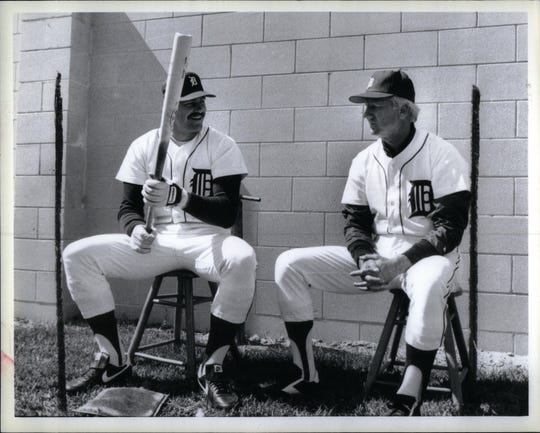 |
| https://www.freep.com/story/sports/mlb/tigers/2020/04/09/detroit-tigers-al-kaline-kirk-gibson/2970159001/ |
“Getting to be around him and understanding who he was on and off the field, it was pretty incredible the way he was,” Gibson said. “Like I told people, he treated me better than I should have been, probably. He was like (former Tigers manager) Sparky (Anderson) in that, they’re hell-bent on making sure the game is better than it was when they came in. That’s their big deal.”
Kaline died Monday at 85. He was the Tigers’ all-time franchise player, known as Mr. Tiger, and when he came across people, they were better for it.
“You have to have some good Kaline stories,” someone asked the other day, and I don’t. But when former Tigers beat writer Chris Iott posted a picture the other day of Kaline sitting by himself on a bench on the back fields of Tiger Town, it prompted my most vivid memory of Kaline.
Early in my career, I sat next to him for a couple of those spring training days out there, asking him questions about hitting and the game and how it has evolved. A couple years in, once he started recognizing my face, he’d be a guy I’d walk up to and chat with. His good friend Jim Price approving me as a “rookie” for the first few years certainly helped.
As Tigers general manager Al Avila, who has spent the past 18 seasons watching baseball alongside Kaline, said Wednesday , everything you hear about him, everything you read and see about him, is true.
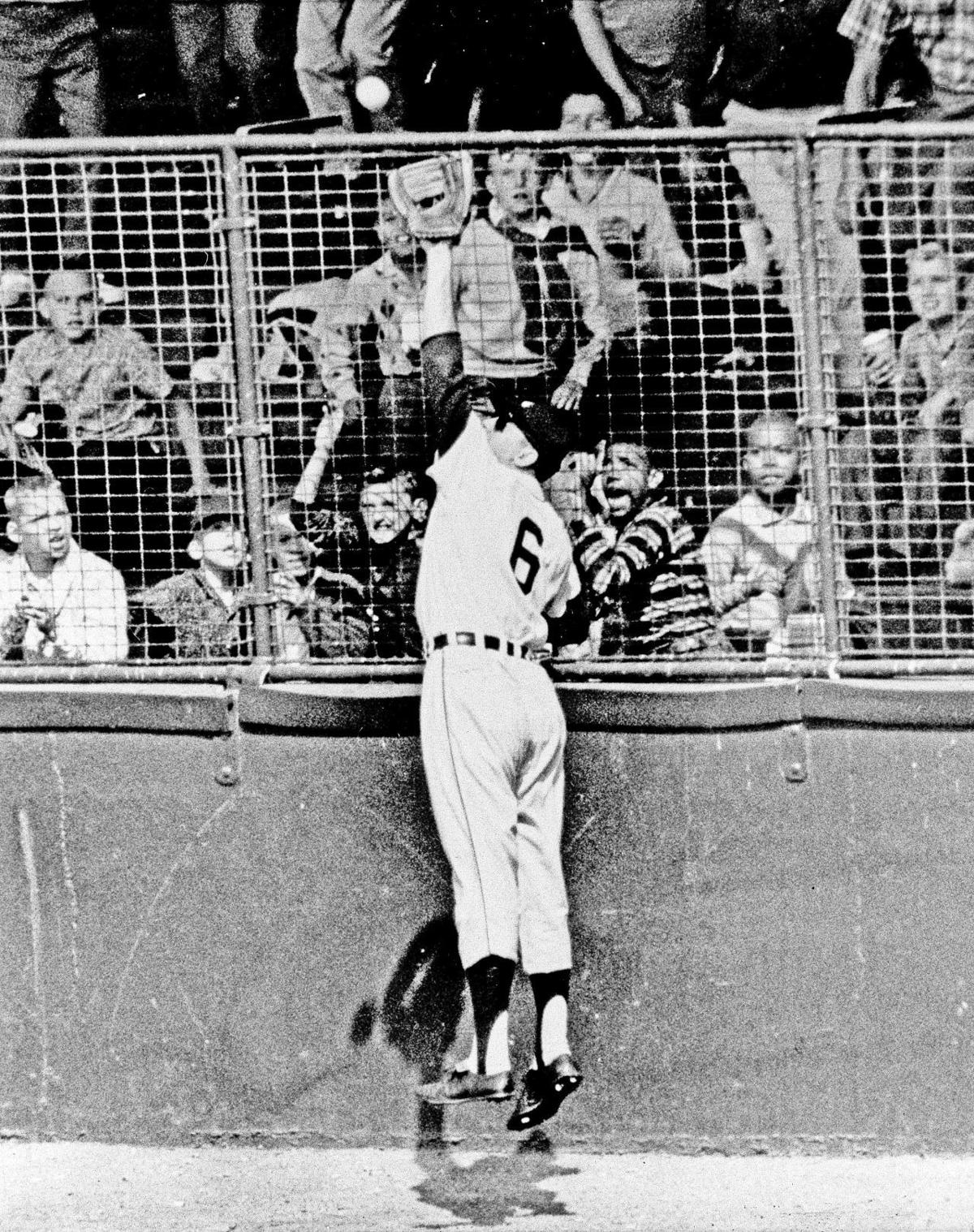
Robert Fick hit a game-winning grand slam in the last game ever at Tigers Stadium.
+++++++++++++++++++++++++++++++++++++++++++++++++++++++++++++++++++++++
+++++++++++++++++++++++++++++++++++++++++++++++++++++++++++++++++++++++
+++++++++++++++++++++++++++++++++++++++++++++++++++++++++++++++++++++++
- Bloggery committed by chris tower - 2004.08 - 10:10
- Days ago = 1740 days ago
- New note - On 1807.06, I ceased daily transmission of my Hey Mom feature after three years of daily conversations. I plan to continue Hey Mom posts at least twice per week but will continue to post the days since ("Days Ago") count on my blog each day. The blog entry numbering in the title has changed to reflect total Sense of Doubt posts since I began the blog on 0705.04, which include Hey Mom posts, Daily Bowie posts, and Sense of Doubt posts. Hey Mom posts will still be numbered sequentially. New Hey Mom posts will use the same format as all the other Hey Mom posts; all other posts will feature this format seen here.

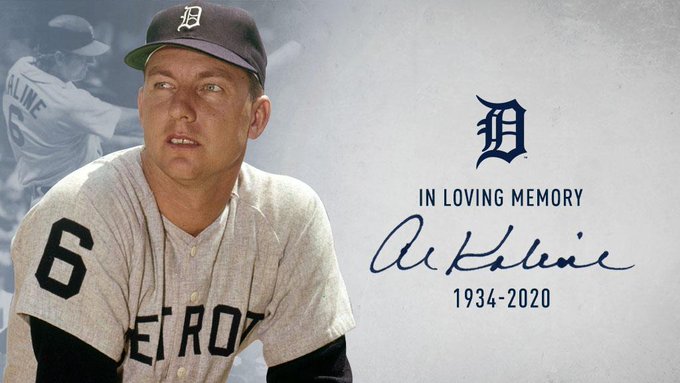


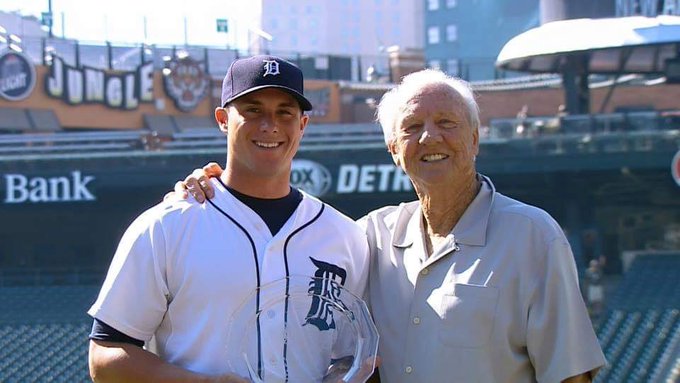


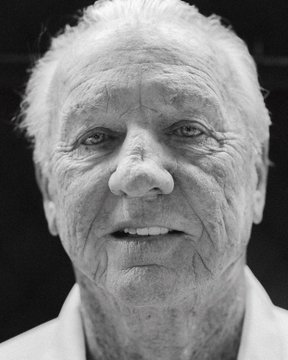
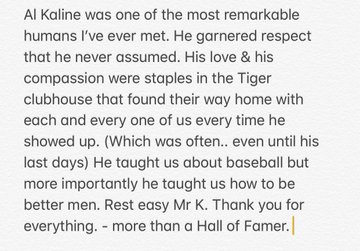
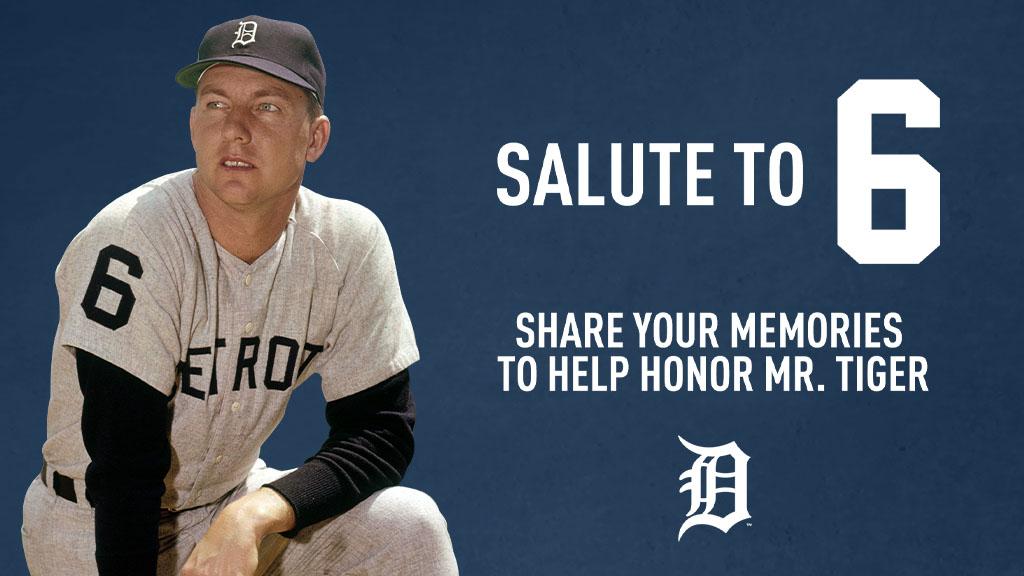





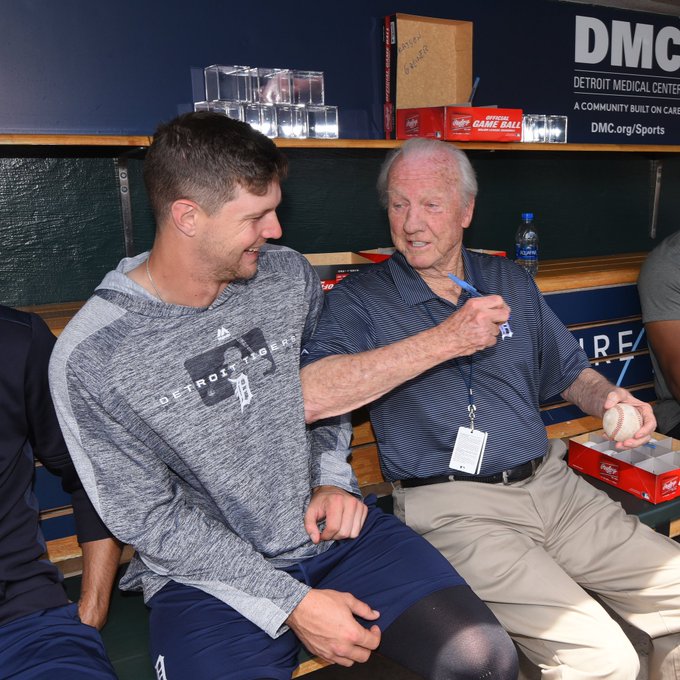

No comments:
Post a Comment